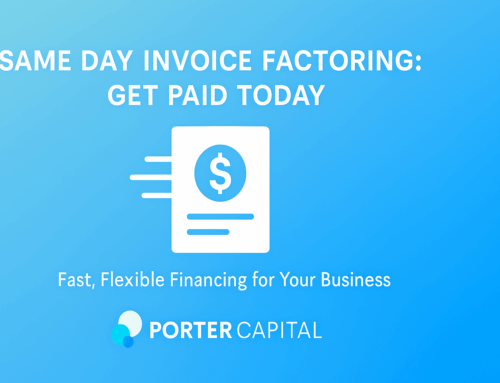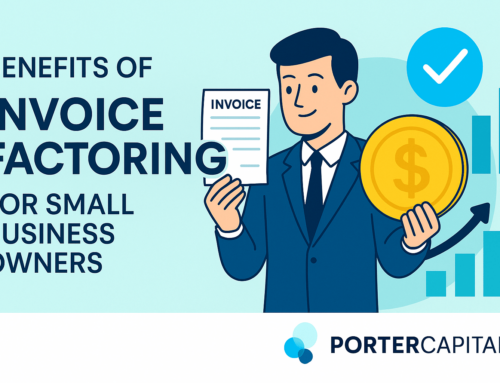Outstanding invoices are one of several common cash flow problems businesses experience. Getting paid on time is crucial for improving your business’ cash flow and financial position and maintaining good customer relationships. It’s vital to send invoices correctly to ensure your customers pay you promptly.
Invoice payment terms are valuable tools that make it easier to receive payments on time. Invoice payment terms set parameters for on-time payments, and enforcing them helps ensure your customers pay you when they should. Understanding standard payment terms and how to use them gives your business the power to increase financial efficiency.
What Are Invoice Payment Terms?
Invoice payment terms are contractually binding terms between a business and a customer that outline the timing and method the customer must use to pay. Companies use invoice payment terms to describe penalties for a missed payment and when payment is due depending on when a company performed the service, delivered the goods, or sent the invoice.
Using straightforward invoice payment terms ensures your customers understand your expectations for payment, which motivates them to comply and provide payments on time. Invoice payment terms also clarify your billing and payment process.
Confused with Invoice Payment Terms?
Don’t let invoice payment terms bog down your business. Learn how Porter Capital can streamline your payments.
What Are the Different Standard Payment Terms?
Companies use several standard payment terms when generating their invoices. It’s helpful to know invoice terms so you can choose the ones that best suit your business needs, industry expectations, and credit terms you want to use with your customers. Here are the most common types of payment terms.
Payment in Advance
Payment in advance means the customer must pay for the services or goods upfront before your business provides them. Many independent contractors, freelancers, and other self-employed workers use PIA to ensure they receive money for their services, no matter how long it takes to provide them.
Net 7 Payment Terms
A net 7 payment term is when a company requires payment within seven working days of the invoice date. Large retailers may use this invoice term to have more time to manage their cash flow.
Net 10 Payment Terms
A net 10-invoice term indicates that your business expects payment within 10 days of the invoice date. If you issue the invoice when your business delivers the goods or services, your customer must pay 10 working days afterward. Many companies across industries use net 10 invoice terms.
Net 30 Payment Terms
With a net 30 invoice term, the customer pays your business within 30 working days of the day you issue the invoice. As with the net 7 invoice term, this term gives customers with significant overhead the chance to sort out their cash flow before having to pay a vendor’s invoice for their goods or services.
Net 60 Payment Terms
A net 60 payment term gives businesses 60 working days from the invoice date to pay in full. This lengthened payment term allows clients to manage their cash flow before providing payment. Net 60 invoice terms are most common in industries like construction and manufacturing.
Net 90 Payment Terms
A net 90 term requires customers to provide payment within 90 days of the invoice date. This term is ideal for businesses that can afford to offer their customers longer financing options so they can handle cash restrictions. Companies that use longer standard invoice terms may use invoice factoring to cover any gaps in cash flow.
End of Month
An end-of-month term gives the customer until the end of the month to pay for their goods or services. An EOM term is common when a business supplies a good or service monthly.
21st of the Month Following Invoice Date
This invoice term requires customers to pay by the 21st of the month after the invoice date. Businesses may use this payment term when they can afford to expense the project before they receive payment, though this can vary by industry and client.
Partial Payment Discount
A business may offer a partial discount on a payment if the customer pays earlier than the agreed-upon invoice term. A PPD term encourages customers to pay in advance so companies can improve their cash flow.
How to Use Invoice Payment Terms?
Effective invoice terms should be an advantage for your business by improving the speed with which your clients pay you and benefit your customers by limiting their inconvenience. When choosing how to use payment terms in your invoicing, prioritize your business needs and discuss the terms with your clients.

Consider some of the ways your business may choose to implement invoice payment terms.
Prepayment
You may decide requiring your clients to pay in advance is the best decision for your business. Receiving payment before you provide your services or goods reduces the risk of non-payment and improves your company’s cash flow. Prepayment limits the chance that a customer will cancel your services. If you offer a discount for prepayment, you also motivate customers to pay early.
Partial Payment
Some businesses require their customers to pay a specific percentage of the cost upfront. Requiring partial payment also reduces the chance that a customer won’t pay and provides some of the capital you need upfront to complete the project. Your customers benefit from the opportunity to make smaller payments, so using invoice terms for partial payment can encourage a customer who is unable or unwilling to make the entire payment upfront.
Installments
Many businesses allow customers to pay in installments on a set payment plan. This strategy further lowers the customer’s upfront cost, making them more willing to commit. Some companies choose monthly installment plans or require payment upon completion of specific milestones. If you select this payment term, clearly outline when each installment is due.
Lines of Credit
A line of credit payment term offers your customers credit toward the services and goods they purchase, which they can repay immediately or on an agreed schedule. This payment term carries greater risk for your business, since a client could default. Companies that use lines of credit include larger organizations that can handle the financial risk.
Immediate Payment
Immediate payment is when your business requires payment upon receiving the goods and services you provide. To reduce the risk involved in this payment term, some companies stipulate that they can repossess their items if they do not immediately receive compensation.
Best Practices for Establishing Payment Terms
The best standard payment terms for your business depend on your goals and customer base. However, there are a few best practices to remember when establishing which invoice payment terms your company will use.
- Use a contract to outline your payment terms: Outlining your agreed-upon invoice terms in a contract reduces the chance of miscommunicating later. Using a contract also gives your business legal standing in case the customer doesn’t pay their invoice on time.
- Invoice promptly to get on-time payments: Ensure you create and send invoices immediately after completing an order or performing a service. You can limit payment delays, maintain a positive cash flow and focus on your other mission-critical tasks.
Contact Porter Capital to Help With Your Invoices
When your business has outstanding invoices from your customers, you still have expenses to pay, like supplies, rent, taxes and payroll. Porter Capital provides working capital solutions like invoice factoring to give your business the money it needs to fill cash flow gaps while you wait for payment. Porter Capital can provide your company with cash upfront in as little as 24 hours to help your business manage its cash flow.
Contact us today to learn more about our solutions and how we can help you solve your cash flow problems.




